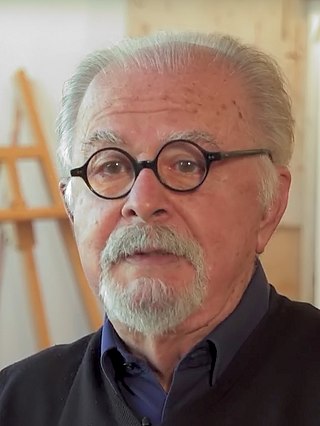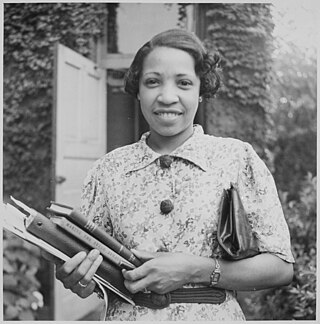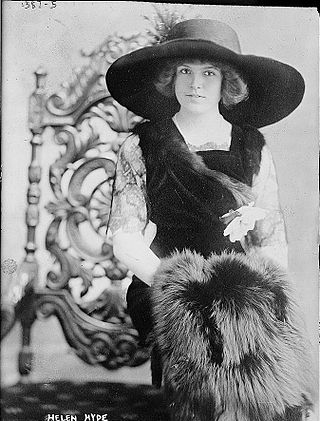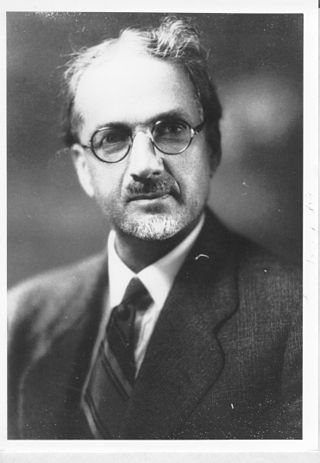Related Research Articles

Fernando Botero Angulo was a Colombian figurative artist and sculptor. His signature style, also known as "Boterismo", depicts people and figures in large, exaggerated volume, which can represent political criticism or humor, depending on the piece. He was considered the most recognized and quoted artist from Latin America in his lifetime, and his art can be found in highly visible places around the world, such as Park Avenue in New York City and the Champs-Élysées in Paris, at different times.

Elaine Marie Catherine de Kooning was an Abstract Expressionist and Figurative Expressionist painter in the post-World War II era. She wrote extensively on the art of the period and was an editorial associate for Art News magazine.

Lois Mailou Jones (1905–1998) was an artist and educator. Her work can be found in the collections of the Smithsonian American Art Museum, The Metropolitan Museum of Art, the National Museum of Women in the Arts, the Brooklyn Museum, the Museum of Fine Arts, Boston, Muscarelle Museum of Art, and The Phillips Collection. She is often associated with the Harlem Renaissance.

Ignacio Martín-Baró was a scholar, social psychologist, philosopher and Jesuit priest who was born in Valladolid, Castilla y Leon, Spain and died in San Salvador, El Salvador. He was one of the victims of the 1989 murders of Jesuits in El Salvador.

Pedro Friedeberg is a Mexican artist and designer known for his surrealist work filled with lines colors and ancient and religious symbols. His best known piece is the “Hand-Chair” a sculpture/chair designed for people to sit on the palm, using the fingers as back and arm rests. Friedeberg began studying as an architect but did not complete his studies as he began to draw designs against the conventional forms of the 1950s and even completely implausible ones such as houses with artichoke roofs. However, his work caught the attention of artist Mathias Goeritz who encouraged him to continue as an artist. Friedeberg became part of a group of surrealist artists in Mexico which included Leonora Carrington and Alice Rahon, who were irreverent, rejecting the social and political art which was dominant at the time. Friedeberg has had a lifelong reputation for being eccentric, and states that art is dead because nothing new is being produced.
Fernando Llort Choussy was a Salvadoran artist, often dubbed "El Salvador's National Artist" by the Foundation for Self Sufficiency in Central America.

Helen Hyde was an American etcher and engraver. She is best known for her color etching process and woodblock prints reflecting Japanese women and children characterizations.
Miguel Condé is a Mexican figurative painter, draughtsman, and print maker. According to Radio France, he is "one of the most important contemporary masters in the field of engraving." Condé's works are in important museum collections all over the world; he is exhibiting regularly at both public and private venues, and he has received numerous international honors and awards.
Emilio Sanchez (1921–1999) was an American artist known for his architectural paintings and graphic lithographs. His work is found in the permanent collections of the Metropolitan Museum of Art, Museum of Modern Art, National Gallery of Art, Smithsonian American Art Museum, Museo Nacional de Bellas Artes de La Habana, Museo de Arte de Ponce, Bogotá Museum of Modern Art, La Tertulia Museum, and the National Gallery of Australia.
Omar D'León was a Nicaraguan painter and poet.

Albert Henry Krehbiel, was the most decorated American painter ever at the French Academy, winning the Prix De Rome, four gold medals and five cash prizes. He was born in Denmark, Iowa and taught, lived and worked for many years in Chicago. His masterpiece is the programme of eleven decorative wall and two ceiling paintings / murals for the Supreme and Appellate Court Rooms in Springfield, Illinois (1907–1911). Although educated as a realist in Paris, which is reflected in his neoclassical mural works, he is most famously known as an American Impressionist. Later in his career, Krehbiel experimented in a more modernist manner.

Darío Antonio Suro García-Godoy was a Dominican painter, art critic, and diplomat from La Vega, Dominican Republic, remembered as one of the most influential Dominican artists from the 20th century. Suro's paintings encompassed a wide range of styles from the impressionist mood of his early paintings, to the neo-realism of his maturity, and finally to the abstraction of his later works. Together with his contemporaries Yoryi Morel, Jaime Colson, and Celeste Woss y Gil, he is known as one of the progenitors of modernist art in the Dominican Republic.

Humberto Calzada is a Cuban-American artist living in Miami, Florida, since 1960.

Freddy Rodríguez was an American artist born in the Dominican Republic, who lived and worked in New York since 1963. Much of his work takes the form of large hard-edge geometric abstractions. His paintings have been widely exhibited and are held in several important collections.

Tito Enrique Canepa Jiménez was a leading Dominican painter of the generation that came of age in the 1930s and 1940s. Canepa's artistic identity was shaped in New York City, where he lived from the age of 21, never returning to stay in his native country. Despite this distance, or perhaps because of it, as León David has pointed out, his works always evince a certain dominicanidad without his setting out to achieve it as a goal — a dominicanidad that is never folkloric. Of the three modernist Dominican painters of the 1930s and 40s singled out by Rafael Díaz Niese as most significant — Canepa, Colson and Suro — Canepa is the one whose artistic activity developed in the most continuous absence from his native country, and the one longest resident in New York. Cánepa is accented in Spanish but not in the original Ligurian.

Rafael Soriano was a Cuban painter who lived in the United States.

The Washington Glass School was founded in 2001 by Washington, DC area artists Tim Tate and Erwin Timmers.

Leon Berkowitz was an American artist and educator. He is best known for his color field paintings and the series, The Unities. He co-founded the Washington Workshop Center, a gallery and school.
Kenneth Victor Young (1933–2017), was an American artist, educator, and designer. He is associated with the Washington Color School art movement. He worked at the Smithsonian Institution as an exhibit designer for 35 years.
Frida Larios is a Central American visual and sculptural artist best known for her typo-graphic art and research related to Maya language systems.
References
- 1 2 "Award-Winning Washingtonian Artist Nicolas F. Shi Shares his Journey and Inspiration". Salvadoran Cultural Institute. 2020-07-03. Retrieved 2021-01-27.
- ↑ "Nicholas Shi". U.S. Department of State - Art in Embassies. Retrieved 2014-02-02.
- ↑ Ministerio de Relaciones Exteriores de El Salvador (13 January 2011). "Nicolas Shi". ISSUU. Retrieved 2014-02-02.
- ↑ "Pintor Salvadoreño Nicolás Fredy Shi". LEON JODIDO 76. 10 November 2008. Retrieved 2014-02-03.
- ↑ Pineda, Grego (2010-06-14). "Nicolas Shi: El color de una vida". DiarioCoLatino.com - Más de un Siglo de Credibilidad. San Salvador. El Salvador C.A. Archived from the original on 2014-02-20. Retrieved 2014-02-02.
- ↑ "Pintor Salvadoreño Nicolás F. Shi". Libros y Letras, Revista Cultural de Columbia y America Latina- Noticias Culturales: Literatura y artes. Vol. 5, no. 612. 2011-03-14. Retrieved 2014-02-02.
- ↑ Gallegos, Guillermo Federico. "El Salvador Philatelist, Year III, No 1".
{{cite journal}}: Cite journal requires|journal=(help) - ↑ "Public Art That Isn't Garbage, but Collects It". Bloomberg.com. June 1, 2015. Retrieved 2019-02-18.
- ↑ "City Lights: Inside Outside, Upside Down: 64 Artists Opine on 2020 - WCP". Washington City Paper. 2021-08-09. Retrieved 2022-01-27.
- ↑ "El Otro Rostro del Inmigrante". Smithsonian Institution. Retrieved 2021-01-27.
- ↑ "Art Collection | IADB". www.iadb.org. Retrieved 2021-01-27.
- ↑ "Nicolas Shi". ArtSlant. 2012. Retrieved 2014-02-02.
- ↑ "Nicolas F. Shi". Artomatic 2009. Archived from the original on 2014-02-20. Retrieved 2014-02-02.
- ↑ "Visions of Dignity". Biggs Museum. 2010. Retrieved 2014-02-02.
- ↑ "Nicolás F. Shi - Gallery photo". El Tiempo Latino - Noticias de Washington DC. 2013-10-26. Retrieved 2014-02-02.
- ↑ "Exhibición de arte Iberoamericano en el mes de la Hispanidad". Embajada de Honduras en Washington D.C. 2013-10-10. Retrieved 2014-02-03.
- ↑ "Gateways/Portales | Smithsonian". Smithsonian Institution. Retrieved 2019-02-18.
![]() This article incorporates public domain material from Nicholas Shi. U.S. Department of State Art in Embassies. United States Department of State . Retrieved 2014-02-02.
This article incorporates public domain material from Nicholas Shi. U.S. Department of State Art in Embassies. United States Department of State . Retrieved 2014-02-02.